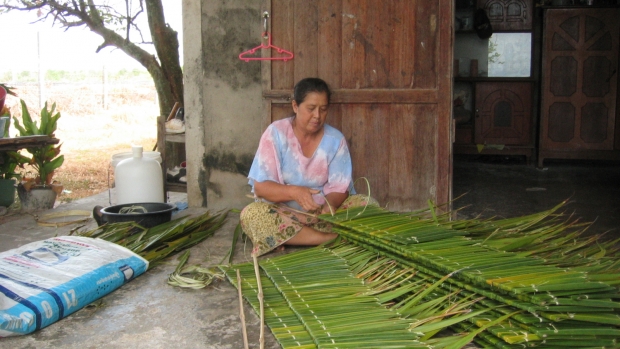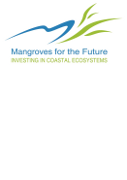Grants :: Small Grant Facilities :: Building community capacity for managing coastal resources at Talingchan
Building community capacity for managing coastal resources at Talingchan

Woman preparing nypa , Thailand © SSereepaowong , 2010
Objectives
This project sought to encourage participatory processes of rehabilitating, conserving and managing natural resources which will lead to increased capacity of communities, more secure livelihoods, and the sustainable management of coastal resources.
Background
This project sought to encourage participatory processes of rehabilitating, conserving and managing natural resources which will lead to increased capacity of communities, more secure livelihoods, and the sustainable management of coastal resources.
Target beneficiaries
The project’s target population was over 5,000 people from 1,020 families with a yearly income of about US$667 per person from fishing, farming and other activities. Sixty families earning their living from small-scale fishing were direct beneficiaries.
Outputs
- Increased income from supplementary livelihood activities such as raising mushrooms and black crabs.
- Recognition from the provincial fishery office.
- Establishment of a community economic area in mangroves covering about nine hectares.
Accomplishments and challenges
Although land ownership in some areas is unclear, several forest plots have been demarcated as public mangrove areas. The project reforested those plots which had clear boundaries.
The project also promoted the culture of black crabs, grouper and mushrooms, and the use of the palm Nypa fruticans.
As there is no officially recognised land ownership in the area, the project had to carry out its activities discreetly. Despite this, project leaders report that the communities achieved the project’s goal, successfully building their capacity for managing coastal resources. The community mobilized itself to demarcate mangroves against encroachment, and was quite successful in keeping out encroachers.
Challenges
The project suffered from limited cooperation among public agencies and a lack of data and information. Some issues were too complex for communities to address alone. Dealing with land tenure, for example, is a major challenge, especially when the community has already identified several plots of land as public mangrove forest.
Contributions to cross-cutting themes
Communications
The project increased its visibility and understanding among local people through the use of community radio, community signboards and other village facilities, as well as community discussion groups.
Lessons Learned
Limited cooperation from relevant government agencies can hinder project implementation.
Project Facts
Country
Location
Talingchan, Krabi, Thailand
Topic
- Knowledge for Management
- Strategies for Management
- Civil Society Engagement
- Knowledge management and communications
Duration
1st Oct 2009 to 31st Oct 2010
MFF Grant Amount
US$8,805
Implementing Partner
Mr Boonnum Bor-Nha
Project Coordinator
Coffee Corner Group of Ban
Talingchan
33 Moo 2, Talingchan, Nua Khlong,
Krabi 81130, Thailand
Tel: +66 83 5078160
Email: boonnumis@hotmail.com
Related Publications

Building Community Capacity for Coastal Resources Management of Tambol Talingchan
Author: MFF Thailand
Posted on: 4th Dec 2013
Category:
Size: 2.7 MB
